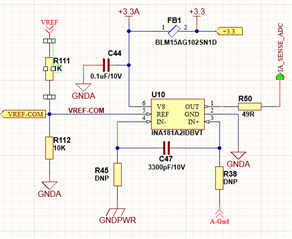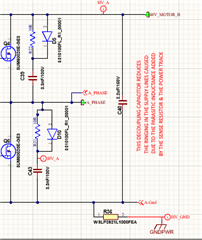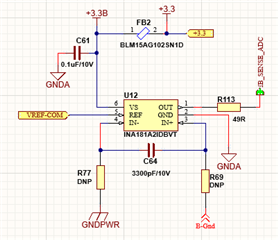Hi,
I designed a three phase BLDC motor controller having three shunt based current sensing circuits as shown below


I set the zero current offset is at 1.65V. Here VREF is 3.3V. The input to the sensing circuit is taken from the shunt R36 ( image 2).
The same Reference voltage VREF-COM which is 1.65V is applied to all other sensing circuit.

I done the trace length match from sensing circuit to microcontroller and shunt to sensing circuit also. And the offset voltage is 1.6V for all sensor output at zero current input.
But while running motor the sensing circuit over all output gain is different . Two phases gave 6mV/A but one gave 10mV/A.
Can some one please check and suggest some solution?

